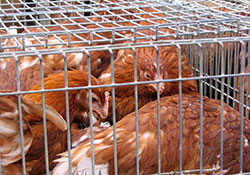Zoonotic flu: influenza viruses at the human–animal interface

iStockphoto
Animal influenza viruses that cross the animal–human divide to infect people are considered novel to humans and therefore have the potential to become pandemic threats. Consequently, the International Health Regulations (2005) stipulate that Member States must report any human infection with a novel influenza virus to WHO. WHO monitors these viruses and produces a monthly risk assessment at the human–animal interface.
Examples of zoonotic influenza viruses that have recently caused human infections include highly pathogenic avian influenza A(H7N9), A(H5N1), and A(H5N6); low pathogenic avian influenza A(H7N2), which was transmitted from a cat; and swine influenza A(H1N2)v and A(H3N2)v.
Advice for the public in outbreak areas
- Avoid contact with any birds (poultry or wild birds) or other animals that are sick or found dead and report them to the relevant authorities.
- Do not touch birds or carcasses with bare hands. If you must handle a carcass, wear gloves or use an inverted plastic bag to collect the bird, and then wash your hands properly with soap or a suitable disinfectant.
- Follow good food safety and food hygiene practices in line with WHO’s Five keys to safer food, such as cooking food thoroughly at sufficiently high temperatures.



